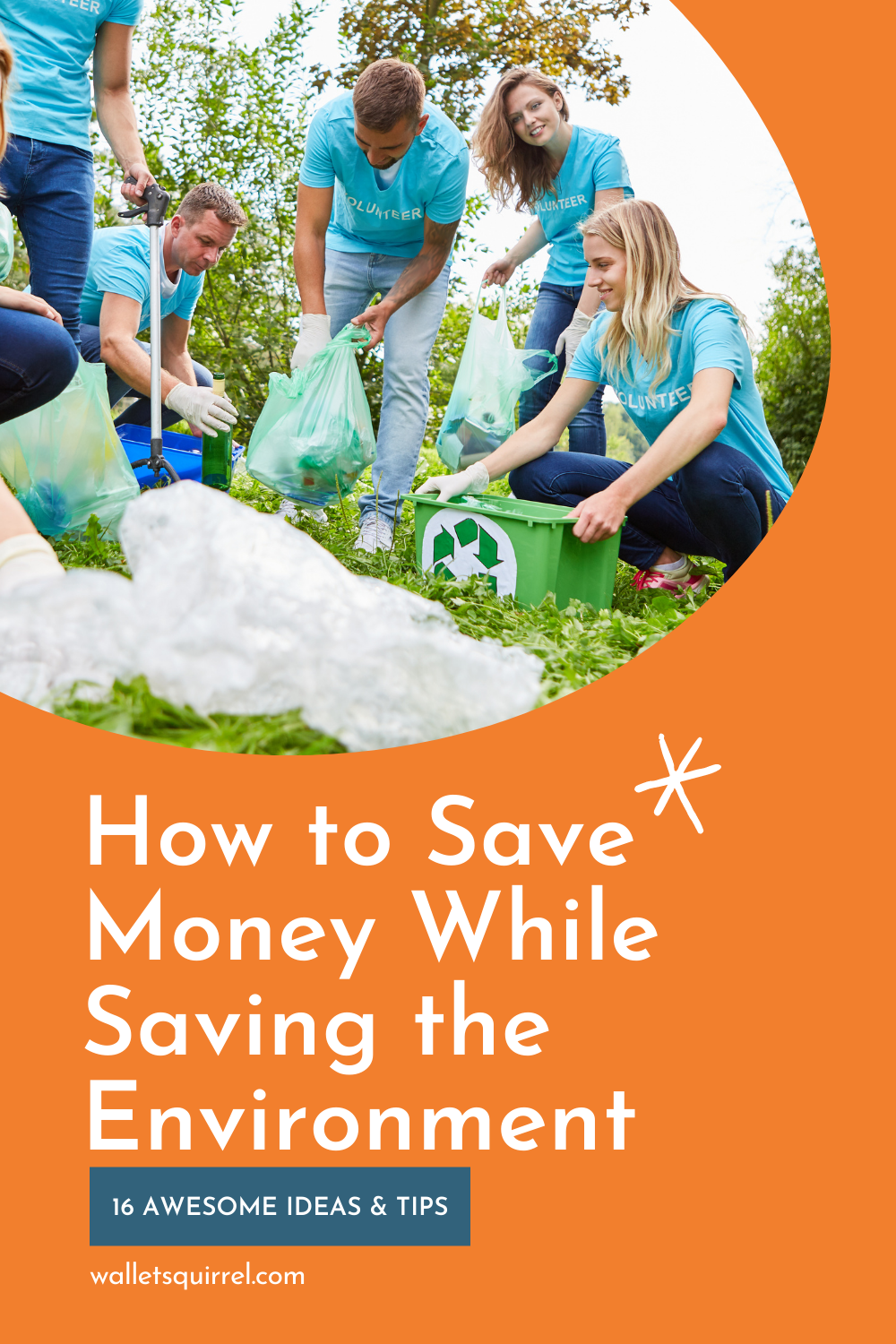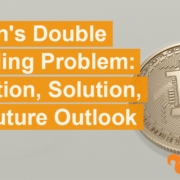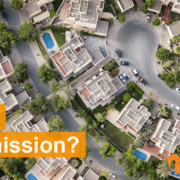How to Save Money While Saving the Environment

However, to be very honest, it took me a bit longer to get on the environmental bandwagon. Sure, I made sure to recycle and I would never have dropped trash on the ground. But it was only when I saw an interview with someone breaking down the science of climate change around the middle of the last decade that I realized just how dire things are.
And as the saying goes: change begins at home. So my first step was to start looking around my own life to see what steps I could take in our household to make just that little bit of difference.
It wasn’t long before something quickly became apparent. Many of the same habits you can implement to save money are also the exact same things you can do to help the environment.
So whether you’re looking to make some changes in your own life to protect your wallet or protect the planet, they’re both great reasons with some really incredible outcomes for both sides of the equation.
Take a look at some of the things I’ve implemented in my own life to achieve both goals to see just which of them you could bring into your own daily habits.
1. Buy a reusable water bottle
If you’re going to make one immediate change, make it this one. Americans currently buy 50 billion bottles of water annually, which is equivalent to every person in the US using 13 plastic bottles per month.
On that basis, if you use a reusable water bottle, you’ll be helping to save 156 plastic bottles per year on average. That’s a lot of plastic…and a lot of money that you’ll suddenly find yourself saving instead of using it to buy those 156 drinks.
2. DIY eco-friendly cleaners
Many dishes and laundry detergents contain synthetic ingredients that are harmful to aquatic life, not to mention that most come in plastic. So, instead, try using cheap ingredients to make your own aromatic cleaners.
Bicarb soda and vinegar can clean an amazing amount of things very effectively and are also much cheaper than commercial cleaning products. And by making effective cleaners from pantry ingredients, you’ll be saving money and helping the environment.
3. Install a programmable thermostat
Replacing your old thermostat with a programmable one is an easy and cost-effective way to save money on your heating and cooling bills. You can set a programmable thermostat to change your home’s temperature based on the time of day, based on whether you’re home, and other factors.
Also, with many programmable thermostats, you can pre-heat or cool your home using an app rather than running the air conditioner all day.
4. Eat less meat
The agricultural industry is one of the largest sources of emissions, but it’s also true that we have to eat. However, did you know that the production of meat worldwide causes twice the pollution of production of plant-based foods?
Based on this, a very simple yet effective change that your household can make is to eat less meat. Many people do this by having meatless Monday, but you can certainly expand this to other days of the week. Rice, pasta, beans, potatoes, and frozen vegetables are much cheaper than meat, especially when you buy them in bulk and store them for a long time.
(Similarly, consuming less dairy is also a good idea for both your budget and the environment!)
5. Cut the faucet
Do you brush your teeth with the water running? It wastes precious resources and your money – and is really completely unnecessary.
Instead, wet your toothbrush, turn off the faucet, apply toothpaste, and brush for two minutes twice a day before turning the water back on to rinse. It may not seem like much, but it can really add up over your lifetime.
6. No more paper towels
While you may be used to reaching for paper towels for a spill or to accompany each meal, there’s really no need to use these disposable paper products anymore.
A good alternative is to ose ‘utility towels’ to clean up spills instead and to have cloth napkins on hand for meals. This makes cleaning messes around the house (or around your mouth) much cheaper and more eco-friendly.
7. Cut food waste
The National Resources Defense Council estimates that up to 40% of US food is thrown away. Safe to say, this isn’t just a huge waste of money but also of resources.
At the same time, food is often one of the three biggest expenses in most household budgets, so food waste can be a huge financial drain for anyone trying to live on a budget. To avoid food waste in your own home, an easy strategy can be to make weekly menu plans. This lets you shop smarter at the grocery store, ensuring that you buy only what you need and resulting in far less food (and financial!) waste.
8. Recycle used items
Manufacturing new clothes, furniture, and other products consume a large part of many Americans’ disposable incomes – while over 11 million tons of textiles go to landfill every year.
So instead of only buying new items, visit your local thrift store to find used items and save resources such as energy and raw materials. You can also look into using websites for both getting new and disposing of existing clothing. Seeing how to sell on Poshmark is one great example of that.
9. Unplug switches
Even when your devices and appliances are turned off, electricity continues to flow to them. That’s right! This is actually known as “vampire energy” and it’s estimated that it accounts for 10% of household energy use.
This is why unplugging appliances when they’re not in use saves energy, which helps reduce CO2 emissions, not to mention your energy expenses.
So, after breakfast, unplug the toaster, and unplug the TV while you’re at work or sleeping. A power strip can make this one-plug process more accessible, but it doesn’t get much more manageable when saving money and the environment.
Remember that the Wi-Fi router must remain plugged in in some cases, such as a home security system or programmable thermostat.
10. Use everyday objects to repurpose
Aside from thrifting, you can reuse and repurpose items already in your home. For example, you can reuse glass jars as storage containers to hold tea bags and other items.
You can even combine this with one of the other suggestions on this list. That is, if you have a store where you can buy dried goods in bulk near you, like beans and rice, use those glass jars as a way to store these items over the long term. Not only is it cheaper, but they can look great when lined up on a shelf in your kitchen.
11. Buy long-lasting items
It may be slightly more expensive initially but, where possible, it’s often better to spend some extra money to ensure you get a product that will last a long time. This may surprise anyone looking to embrace frugal living, but making this choice will save you money and prevent more trash from entering landfills.
For example, while fast fashion can be tempting due to its low cost and the fact that pieces tend to be very similar to many in-fashion items, there’s a huge environmental cost with this. If you can, try to spend a bit more on more classic, longer-lasting pieces, to avoid the fast fashion carousel.
12. Insulate your doors and windows
A costly ecological and financial error is allowing heat to escape in the winter and cool air to escape in the summer. Fortunately, this can be easily corrected.
Weatherstripping doors and windows is one way to help the environment while saving money on utility bills. In particular, the US Department of Energy claims that sealing an older home can save you up to 20% on heating and cooling costs. Not a bad saving for very little effort!
13. Get that garden going
A large backyard tomato, pepper, and cucumber garden could save you hundreds of dollars annually. But even if you don’t have a yard with the space for a full vegetable patch, try starting with a window box herb garden for easy access to basil for salads and cilantro for guacamole.
Growing your own herbs is definitely good for the environment and your wallet – not to mention your meals, as fresh herbs can make such a difference!
14. Use LED bulbs
Another quick fix is to replace dim light bulbs with LEDs. While it’s true that LED bulbs cost more than incandescent bulbs upfront, they also last much longer and use up to 80% less electricity.
Specifically, doing this could save you up to $20 per bulb. If you want to see the impact of this on your own household budget, use this energy savings calculator to calculate your personal return on investment of switching to LED light bulbs.
15. Quit smoking
Smoking is not only costly, but it also pollutes waterways, soil, and wildlife. There’s also the fact that discarded still-lit cigarettes can cause property damage.
However, the actual financial cost of smoking can be calculated using simple economics. The lifetime financial cost of smoking is estimated to be between $1.6 and $3.1 million for each smoker, which includes product costs and high healthcare costs. I don’t know about you, but I have a few better ideas of how I could use $3 million than inhaling it.
16. Change your transportation methods
Carpooling, biking, walking or public transport are excellent ways to save money on gas. The more you avoid driving, the less expensive it will be to own a car. It also reduces your carbon footprint.
In the case of biking and walking, these can also be great for your health. Not only is living longer a pretty reasonable goal to have overall, this is also good for your wallet in that it will likely result in reduced health costs over your life.
Final thoughts
There’s no question that saving money and setting yourself up for a solid financial future is definitely something we should all be doing. But doing what we can for the environment is also more critical than ever.
So if you can do both at the same time, then it’s the very definition of a win-win!
Which of these have you implemented in your own life? And do you have any other ideas of actions that help both your wallet and the environment?
Anna is the founder of personal finance site, LogicalDollar, where she shares the advice that helped her convert $60,000 in debt into a thriving investment portfolio to help others get on the path to financial freedom.










Leave a Reply
Want to join the discussion?Feel free to contribute!